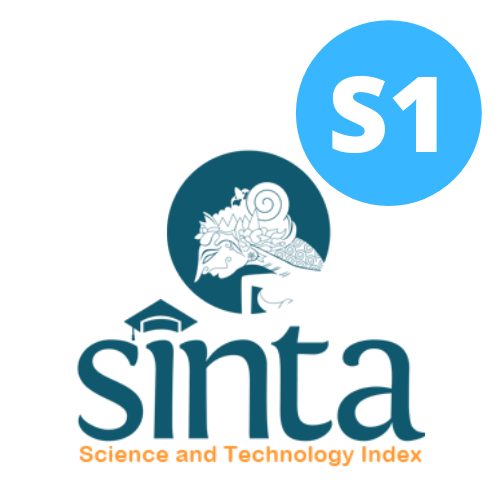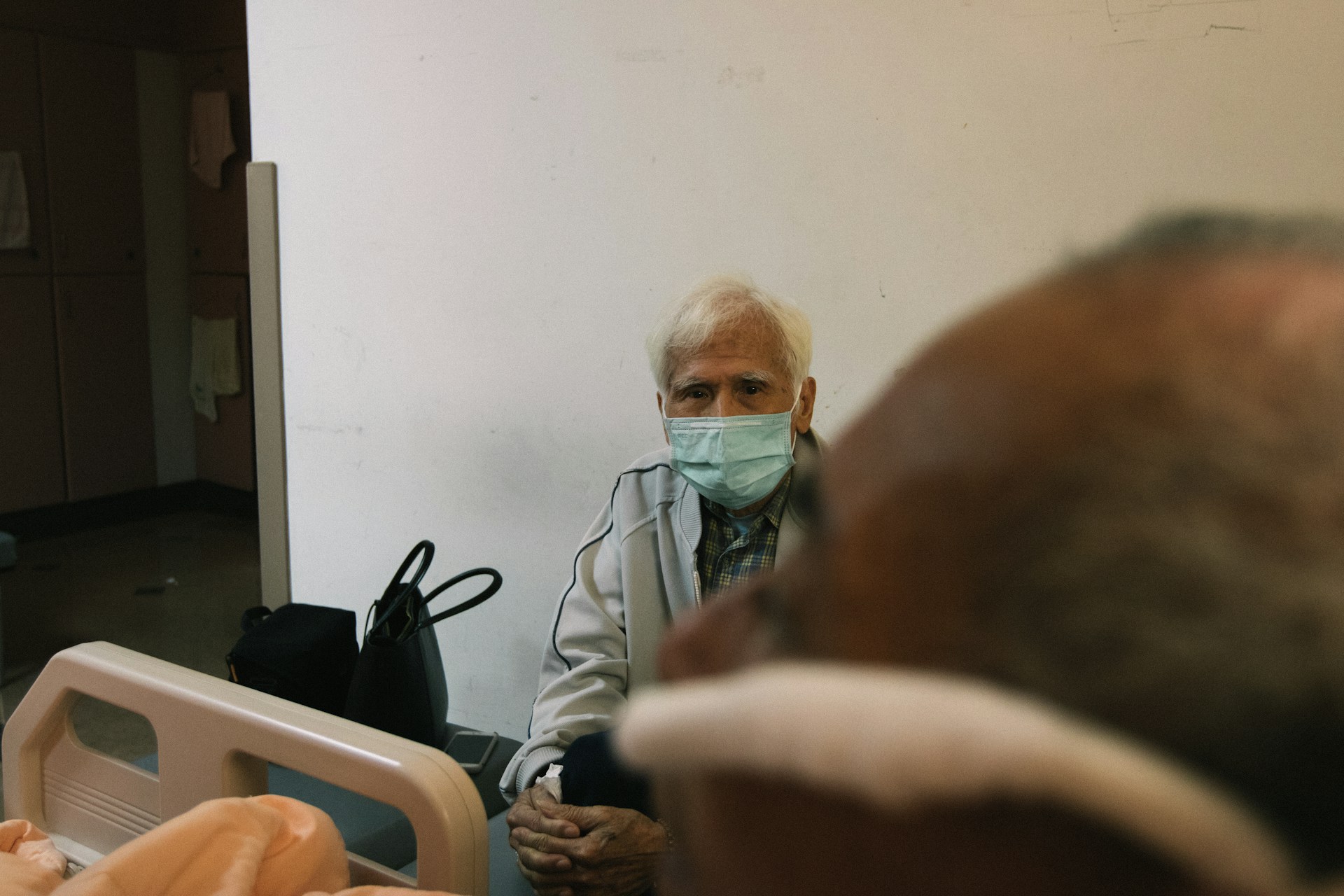Practice of Responsive Feeding and Its Correlation with Stunted Children and Obese/Overweight Mothers (SCOM) in Semarang City
Praktik Responsive Feeding dan Hubungannya dengan Stunted Children and Obese/Overweight Mothers (SCOM) di Kota Semarang

Downloads
Background: A double burden of malnutrition can occur at individual, household, or community levels.
Objectives: This study analyzed the relationship between responsive feeding practices and Stunted Children and Obese/Overweight Mothers (SCOM) as a type of double-burden malnutrition at the household level.
Methods: An observational analytical study with a case-control design was conducted in Semarang City between May and October 2022. The subjects of this study were mother-toddler pairs (children < 3 years old) with SCOM and non-SCOM conditions in Semarang. Inclusion criteria were as follows: mothers and toddlers in good health (mothers do not have diseases that require special diets, and toddlers are in good health at the time of the study) and the mother did not smoke or drink alcohol. Ratio SCOM: non-SCOM groups was 1:2. Maternal nutritional status was measured using the Body Mass Index (BMI). Stunting classification (PB/U or TB/U) used the WHO Anthro software version 1.03. Data analysis was performed using chi-square, Pearson correlation, and multiple logistic regression.
Results: Poor responsive feeding practices occurred in 95.8% of the SCOM families. There was a correlation between the parents' educational level and the practice of responsive feeding. There was a correlation between responsive feeding attitudes and practices and SCOM. After controlling for sociodemographic characteristics, responsive feeding practice predicted SCOM with an Odd Ratio (OR) of 0.012 (0.001–0.191). Responsive feeding practices were correlated with the prevalence of SCOM.
Conclusions: Most families with SCOM practice responsive feeding in poor categories. Responsive feeding practices were a predictor of SCOM.
Bhurosy, T. & Jeewon, R. Overweight and obesity epidemic in developing countries: A problem with diet, physical activity, or socioeconomic status? Sci. World J. 2014, (2014). https://doi.org/10.1155/2014/964236
WHO. The double burden of Malnutrition, Policy Brief. Who/Nmh/Nhd/17.3 21, 402–404 (2017).
WHO-obesity. https://www.who.int/health-topics/obesity#tab=tab_1 (2022).
Kementerian Kesehatan. Hasil Utama Riset Kesehatan Dasar. Kementrian Kesehatan Republik Indonesia (2018) doi:1 Desember 2013.
Kementerian Kesehatan RI. Profil Kesehatan Indonesia Tahun 2018. (2019). doi:10.1080/09505438809526230.
Bredenkamp, C., Buisman, L. R. & Van de Poel, E. Persistent inequalities in child undernutrition: Evidence from 80 countries, from 1990 to today. Int. J. Epidemiol. 43, 1328–1335 (2014). https://doi.org/10.1093/ije/dyu075
UNICEF. UNICEF : Nutrition. Unicef www.unicef.org/nutrition (2022).
Kementerian Kesehatan RI. Hasil Studi Status Gizi Indonesia (SSGI) Tingkat Nasional, Provinsi, dan Kabupaten/Kota Tahun 2021. (Kementerian Kesehatan Republik Indonesia, 2021).
Badan Kebijakan Pembangunan Kesehatan. Kementerian Kesehatan. Status Gizi SSGI 2022. (2022).
Woldehanna, T., Behrman, J. R. & Araya, M. W. The effect of early childhood stunting on children's cognitive achievements: Evidence from young lives Ethiopia. Ethiop. J. Heal. Dev. 31, 75–84 (2017).
Bourke, C. D., Berkley, J. A. & Prendergast, A. J. Immune Dysfunction as a Cause and Consequence of Malnutrition. Trends Immunol. 37, 386–398 (2016). https://doi.org/10.1016/j.it.2016.04.003
Haddad, L., Cameron, L. & Barnett, I. The double burden of malnutrition in SE Asia and the Pacific: Priorities, policies and politics. Health Policy Plan. 30, 1193–1206 (2015). https://doi.org/10.1093/heapol/czu110
Gartner, A. et al. A double burden of overall or central adiposity and anemia or iron deficiency is prevalent but with little socioeconomic patterning among moroccan and tunisian urban women. J. Nutr. 144, 87–97 (2014). https://doi.org/10.3945/jn.113.178285
Dieffenbach, S. & Stein, A. D. Stunted child/overweight mother pairs represent a statistical artifact, not a distinct entity. J. Nutr. 142, 771–773 (2012). https://doi.org/10.3945/jn.111.153387
Lee, J., Houser, R. F., Must, A., De Fulladolsa, P. P. & Bermudez, O. I. Socioeconomic disparities and the familial coexistence of child stunting and maternal overweight in guatemala. Econ. Hum. Biol. 10, 232–241 (2012). https://doi.org/10.1016/j.ehb.2011.08.002
Oddo, V. M. et al. Predictors of maternal and child double burden of malnutrition in rural Indonesia and Bangladesh 1 – 3. (2012) doi:10.3945/ajcn.111.026070.1. https://doi.org/10.3945/ajcn.111.026070
Rojroongwasinkul, N. et al. SEANUTS: The nutritional status and dietary intakes of 0.5-12-year-old Thai children. Br. J. Nutr. 110, 36–44 (2013). https://doi.org/10.1017/s0007114513002110
Sandjaja, S. et al. Food consumption and nutritional and biochemical status of 0·5-12-year-old Indonesian children: The SEANUTS study. Br. J. Nutr. 110, (2013). https://doi.org/10.1017/s0007114513002109
Rachmah, Q., Mahmudiono, T. & Loh, S. P. Predictor of Obese Mothers and Stunted Children in the Same Roof: A Population-Based Study in the Urban Poor Setting Indonesia. Front. Nutr. 8, 1–9 (2021). https://doi.org/10.3389/fnut.2021.710588
Tanumihardjo, S. A. et al. Poverty, Obesity, and Malnutrition: An International Perspective Recognizing the Paradox. J. Am. Diet. Assoc. 107, 1966–1972 (2007). https://doi.org/10.1016/j.jada.2007.08.007
Hong, S. A. Prevalence and regional variations of coexistence of child stunting and maternal overweight or obesity in Myanmar. Public Health Nutr. 24, 2248–2258 (2021). https://doi.org/10.1017/s136898002000186x
Félix-Beltrán, L., Macinko, J. & Kuhn, R. Maternal height and double-burden of malnutrition households in Mexico: Stunted children with overweight or obese mothers. Public Health Nutr. 24, 106–116 (2021). https://doi.org/10.1017/s136898002000292x
An overview on the nutrition transition and its health implications: the Bellagio meeting. Public Health Nutr. 5, 93–103 (2002). https://doi.org/10.1079/phn2001280
Fikadu, T., Assegid, S. & Dube, L. Factors associated with stunting among children of age 24 to 59 months in Meskan district, Gurage Zone, South Ethiopia a case-control study. BMC Public Health 14, 1–7 (2014). https://doi.org/10.1186/1471-2458-14-800
Lemaking, V. B., Manimalai, M. & Djogo, H. M. A. Hubungan pekerjaan ayah, pendidikan ibu, pola asuh, dan jumlah anggota keluarga dengan kejadian stunting pada balita di Kecamatan Kupang Tengah, Kabupaten Kupang. Ilmu Gizi Indones. 5, 123 (2022). https://doi.org/10.35842/ilgi.v5i2.254
Stewart, C. P., Iannotti, L., Dewey, K. G., Michaelsen, K. F. & Onyango, A. W. Contextualising complementary feeding in a broader framework for stunting prevention. Matern. Child Nutr. 9, 27–45 (2013). https://doi.org/10.1111/mcn.12088
Ramadhani, M. & Yenita, R. N. Analisis Risiko Stunting dalam Pola Asuh pada Balita di Wilayah Kerja Puskesmas Siak Kabupaten Siak. Al-Tamimi Kesmas 11, 36–44 (2022). https://doi.org/10.35328/kesmas.v11i1.2183
Gunawan, H., Pribadi, R. P. & Rahmat, R. Hubungan Pola Asuh Pemberian Makan Oleh Ibu Dengan Kejadian Stunting Pada Balita Usia 2-5 Tahun. J. Keperawatan 'Aisyiyah 6, 79–86 (2020). https://doi.org/10.33867/jka.v6i2.143
Tessema, M., Belachew, T. & Ersino, G. Feeding patterns and stunting during early childhood in rural communities of Sidama South Ethiopia. Pan Afr. Med. J. 14, 1–12 (2013). https://doi.org/10.11604/pamj.2015.20.252.3588
Harbron, J., Booley, S., B, N. & CE, D. Responsive feeding: establishing healthy eating behaviour early on in life. South African J. Clin. Nutr. 26, S141–S149 (2013).
Permatasari, T. A. E. Pengaruh Pola Asuh Pemberian Makan Terhadap Kejadian Stunting Pada Balita. J. Kesehat. Masy. Andalas 14, 3 (2021). https://doi.org/10.24893/jkma.v14i2.527
Septamarini, R. G., Widyastuti, N. & Purwanti, R. Hubungan pengetahuan dan sikap responsive feeding dengan kejadian stunting pada baduta usia 6-24 bulan di wilayah kerja Puskesmas Bandarharjo, Semarang. J. Nutr. Coll. 8, 17–21 (2019). https://doi.org/10.14710/jnc.v8i1.23808
WHO. Public health Appropriate body-mass index for Asian populations and its implications for policy and intervention strategies. Lancet 363, 157–163 (2004).
Lim, J. U. et al. Comparison of World Health Organization and Asia-Pacific body mass index classifications in COPD patients. Int. J. COPD 12, 2465–2475 (2017). https://doi.org/10.2147/copd.s141295
World Health Organization (WHO). Guideline: assessing and managing children at primary health-care facilities to prevent overweight and obesity in the context of the double burden of malnutrition Updates for the Integrated Management of Childhood Illness (IMCI). Who (2017).
Masan, L., Rudi, A., Haryanti, Y., Akbar, H. & Abbani, A. Y. The determinants of anemia severity and BMI level among anemic women of reproductive age in Indonesia Determinan tingkat keparahan anemia dan level indeks massa tubuh pada wanita anemia pada usia reproduktif di Indonesia. J. Heal. Epidemiol. Commun. Dis. 7, 26–39 (2021). https://doi.org/10.22435/jhecds.v7i1.4760
Nugroho, M. R., Sasongko, R. N. & Kristiawan, M. Faktor-faktor yang Mempengaruhi Kejadian Stunting pada Anak Usia Dini di Indonesia. J. Obs. J. Pendidik. Anak Usia Dini 5, (2021). https://doi.org/10.31004/obsesi.v5i2.1169
Desisa Hundera, T. Nutritional Status and Associated Factors Among Lactating Mothers in Nekemte Referral Hospital and Health Centers, Ethiopia. Int. J. Nutr. Food Sci. 4, 216 (2015). https://doi.org/10.11648/j.ijnfs.20150402.23
Tiha, riani e, Legi, nonce n & Walalangi, rivolta g. . Hubungan Pengetahuan Gizi , Pola Makan Dengan Status Gizi Pada Ibu Di Desa Pahaleten Kecamatan Kakas Kabupaten Minahasa. Gizido 8, 71–77 (2016). https://doi.org/10.55313/ojs.v10i2.155
Mahmudiono, T., Nindya, T. S., Andrias, D. R., Megatsari, H. & Rosenkranz, R. R. Household food insecurity as a predictor of stunted children and overweight/obese mothers (SCOWT) in Urban Indonesia. Nutrients 10, 10050535 (2018). https://doi.org/10.3390/nu10050535
Ng, C. S., Dibley, M. J. & Agho, K. E. Complementary feeding indicators and determinants of poor feeding practices in Indonesia: A secondary analysis of 2007 Demographic and Health Survey data. Public Health Nutr. 15, 827–839 (2012). https://doi.org/10.1017/s1368980011002485
Febriani Reski Briliantika & Noer, E. R. Faktor determinan perilaku responsive feeding pada balita stunting usia 6 - 36 bulan. J. Nutr. Coll. 5 Jilid I, 120–129 (2016).
Purwanti, R. et al. Buku Saku Strategi Pemberian Makan Responsive Feeding pada Balita. (Departemen Ilmu Gizi Fakultas Kedokteran Universitas Diponegoro, 2022).
Blaney, S., Februhartanty, J. & Sukotjo, S. Feeding practices among Indonesian children above six months of age: A literature review on their magnitude and quality (part 1). Asia Pac. J. Clin. Nutr. 24, 16–27 (2015).
Latifah, U., Prastiwi, R. S. & Baroroh, U. The Responsive Feeding Behavior and Stunting Incident on Toddlers. J. Kebidanan 10, 143–148 (2020). https://doi.org/10.31983/jkb.v10i2.6286
Garrett, J. L. & Ruel, M. T. Stunted child - overweight mother pairs: An emerging policy concern? 36 (2003). https://doi.org/10.1177/156482650502600205
Lutter, C. K. et al. Undernutrition, poor feeding practices, and low coverage of key nutrition interventions. Pediatrics 128, (2011). https://doi.org/10.1542/peds.2011-1392
Dranesia, A., Wanda, D. & Hayati, H. Pressure to eat is the most determinant factor of stunting in children under 5 years of age in Kerinci region, Indonesia. Enferm. Clin. 29, 81–86 (2019). https://doi.org/10.1016/j.enfcli.2019.04.013
Black, M. M. & Aboud, F. E. Responsive Feeding Is Embedded in a Theoretical Framework of Responsive Parenting. J. Nutr. 141, 490–494 (2011). https://doi.org/10.3945/jn.110.129973
Sall, N. S. et al. A measurement scale to assess responsive feeding among Cambodian young children. Matern. Child Nutr. 16, 1–11 (2020). https://doi.org/10.1111/mcn.12956
Copyright (c) 2024 Amerta Nutrition

This work is licensed under a Creative Commons Attribution-ShareAlike 4.0 International License.
AMERTA NUTR by Unair is licensed under a Creative Commons Attribution-ShareAlike 4.0 International License.
1. The journal allows the author to hold the copyright of the article without restrictions.
2. The journal allows the author(s) to retain publishing rights without restrictions
3. The legal formal aspect of journal publication accessibility refers to Creative Commons Attribution Share-Alike (CC BY-SA).
4. The Creative Commons Attribution Share-Alike (CC BY-SA) license allows re-distribution and re-use of a licensed work on the conditions that the creator is appropriately credited and that any derivative work is made available under "the same, similar or a compatible license”. Other than the conditions mentioned above, the editorial board is not responsible for copyright violation.












































